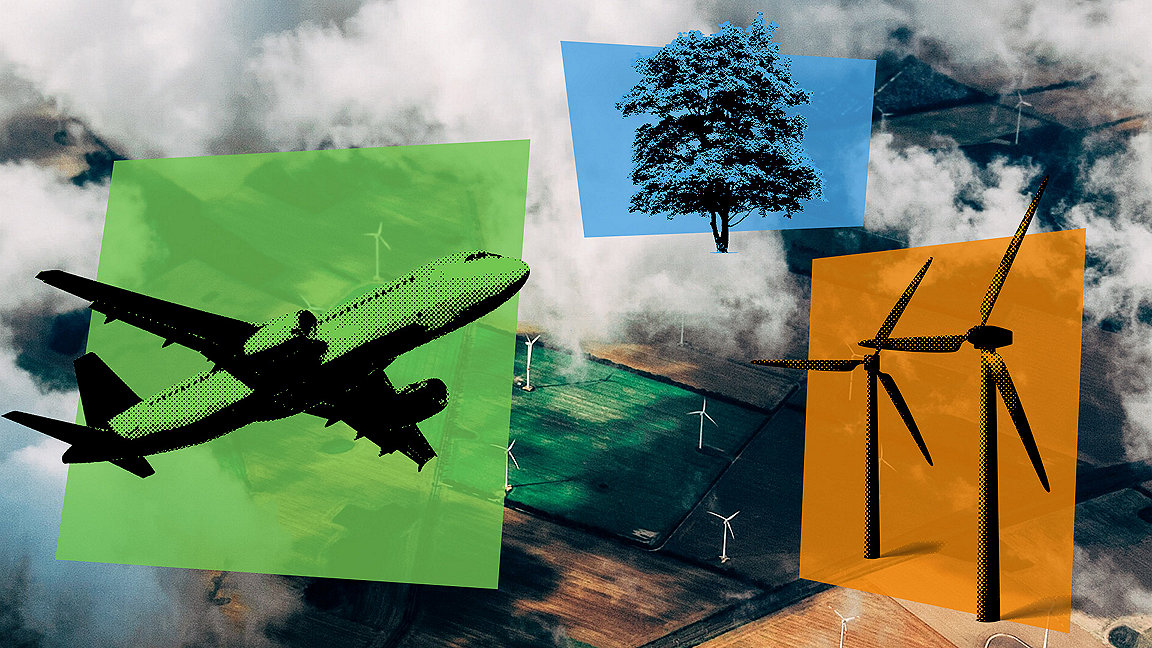
Carbon offsetting is at a crossroads. Demand for voluntary offsetting schemes designed to neutralise corporations and individuals’ carbon footprints are at an all-time high. This $1bn market could hit $190bn within eight years as demand for carbon credits is predicted to skyrocket 50-fold by 2050.
But offsetting is mired in controversy and scepticism. It is unregulated, untamed, difficult to navigate and often described as the metaphorical Wild West. Critics see it as a licence for polluters to continue belching out emissions while making greenwashing claims. Even high-profile offsetting projects – such as afforestation programmes used by the organisation Verra – have come under fire for exaggerating their impact.
But change is on the horizon which could make offsetting a more valuable tool in the fight to reduce global warming.
Carbon offsetting allows carbon dioxide emissions (CO2) to be balanced out through support for environmental projects across the world. The idea is that by buying enough carbon credits to compensate for emissions, carbon footprints are reduced. One credit is equal to one tonne of CO2, so when a credit is bought and used, one tonne of CO2 is supposedly reduced or removed from the atmosphere.
Offsetting schemes come in all shapes and sizes. They include “nature-based” projects such as afforestation, which remove and store CO2 as well as funding renewable energy production or community initiatives such as clean cookstove schemes in developing countries that reduce or avoid emissions. Worryingly, however, there is no governing body or mandatory regulations for the voluntary carbon market, although independent organisations such as Gold Standard provide registers of schemes and audit trails.
In theory, offsetting should play an ancillary role in net zero strategies, mopping up any lingering emissions as organisations and individuals change their behaviours. “Offsetting is really necessary,” says James Kavanagh MRICS, head of land and resources at RICS. “It’s the only way we are going to be able to get to net zero. Buildings and industry will always produce carbon no matter how renewable we go, and we need it to be part of our overall kit in climate change policy.”
As corporations and countries set themselves hugely ambitious carbon reduction targets for 2030 and 2050, it’s easy to see why the demand for offsets is set to rocket. “No matter how aggressive [corporations] are in their net-zero goals, they are always going to have residual emissions,” explains Kyle Harrison, author of BloombergNEF’s recent offset market outlook report. Harrison says 2021 was a record year for offsetting in terms of supply and demand: at the end of October last year, 127 million offsets had been bought and used, up from 93 million through the whole of 2020. By 2050, he predicts that if the market stays as it is now, companies will be looking to offset over 50 billion metric tonnes of CO2 a year. And this raises the question – should the market stay the same?
“If the market grows without significant changes in the quality of projects it will have little or no impact on carbon reduction,” warns Niklas Kaskeala, chief impact officer at Compensate, a Finland-based, non-profit offsets brokerage. He says the market is over-supplied with low-quality projects including forest plantations that are later sold to loggers or tree conservation schemes that aren’t really under threat of deforestation. He says in an analysis of more than 100 verified schemes around the world, 90% failed to meet the brokerage’s sustainability, bio-diversity and human rights standards, leading Greenpeace to brand carbon offsetting “a scammer’s dream scheme”.
“If the market grows, but 90% of projects have questionable biodiversity impacts, that’s not the type of market we want to see,” Kaskeala says. “The market is flawed and it’s important we work to reform it, so we have an effective tool.”
Back in September 2020, the economist, Mark Carney, now the UN’s special envoy for climate action, launched a taskforce to investigate how to scale up offsetting, improve its integrity and make it more investable. This included all parts of the industry, carbon-credit buyers and sellers, but most notably the financial investment sector. A year later, it announced the launch of a permanent governance body that will oversee its core carbon principles (CCPs), which will set the benchmark for carbon-credit quality. These will be phased in this year and, to be CCP-compliant, projects will have to show “a clear, measurable and direct impact in reducing carbon emissions”. Harrison, also a member of the taskforce, says any project that wants to be verified will need to be registered by the body and the CCPs are expected to continuously develop.
Around the same time, nations at COP26 in Glasgow, UK, agreed to make changes in carbon-credit accounting to try and solve the issue of “double counting”. A perfect example of this can be found in Scotland: Shell is funding a tree-planting scheme there and is planning to count the future credits once it grows. According to reports, the Scottish Government also intends to count the project.
For Kaskeala these changes are welcome and he’s hopeful that making the voluntary carbon markets more institutional will help “but it’s not the [big] leap we need”. He supports the growing push to use removal-only schemes. Currently, he says, around 95% of all offsetting projects are based on avoiding emissions, such as clean cookstoves or renewable energy. But these don’t actually remove any CO2, which is what we need to focus on to have impact.
Removal schemes, such as afforestation, currently account for just 5% of the market. He points to a new project in the east coast of the US where fast-growing kelp is sunk on the seabed to lock in CO2, as an example. Significantly, however, switching to a removal-only market would, the BloombergNEF report states, cause the price of carbon credits to skyrocket. “But it may even force companies to further reduce their gross emissions, rather than buy offsets,” it concludes.
But while the attention is on creating a better voluntary carbon market, there are other prices to pay for offsetting. Huge swathes of land will be needed for carbon sequestration to accommodate the potential demand, which has political, social and economic implications. Most of this supply is likely to come from developing countries.
“This is a real double-edged sword,” says Kavanagh. “It will mean an increase in land prices with huge organisations looking to buy vast amounts of land, but it is also scary for the indigenous communities living on that land.”
This raises concerns over land rights about which campaigners and NGOs are already voicing alarm. Of course, for some countries it may be an opportunity to make use of their natural capital: Belize in Central America is already reportedly working with academics to understand the value of its natural resources. But in Wales, the impact is already being felt, with farmers lobbying the government over the amount of land being bought up by businesses for offsetting schemes.
The consensus is that the market needs to change – even if it is just to encourage companies to use offsetting as a last resort. “It is the Wild West right now,” says Harrison. “But we now have more data to understand it, and there are exciting changes coming to improve it.”

"If the market grows without significant changes in the quality of projects it will have little or no impact on carbon reduction" Niklas Kaskeala, Compensate


